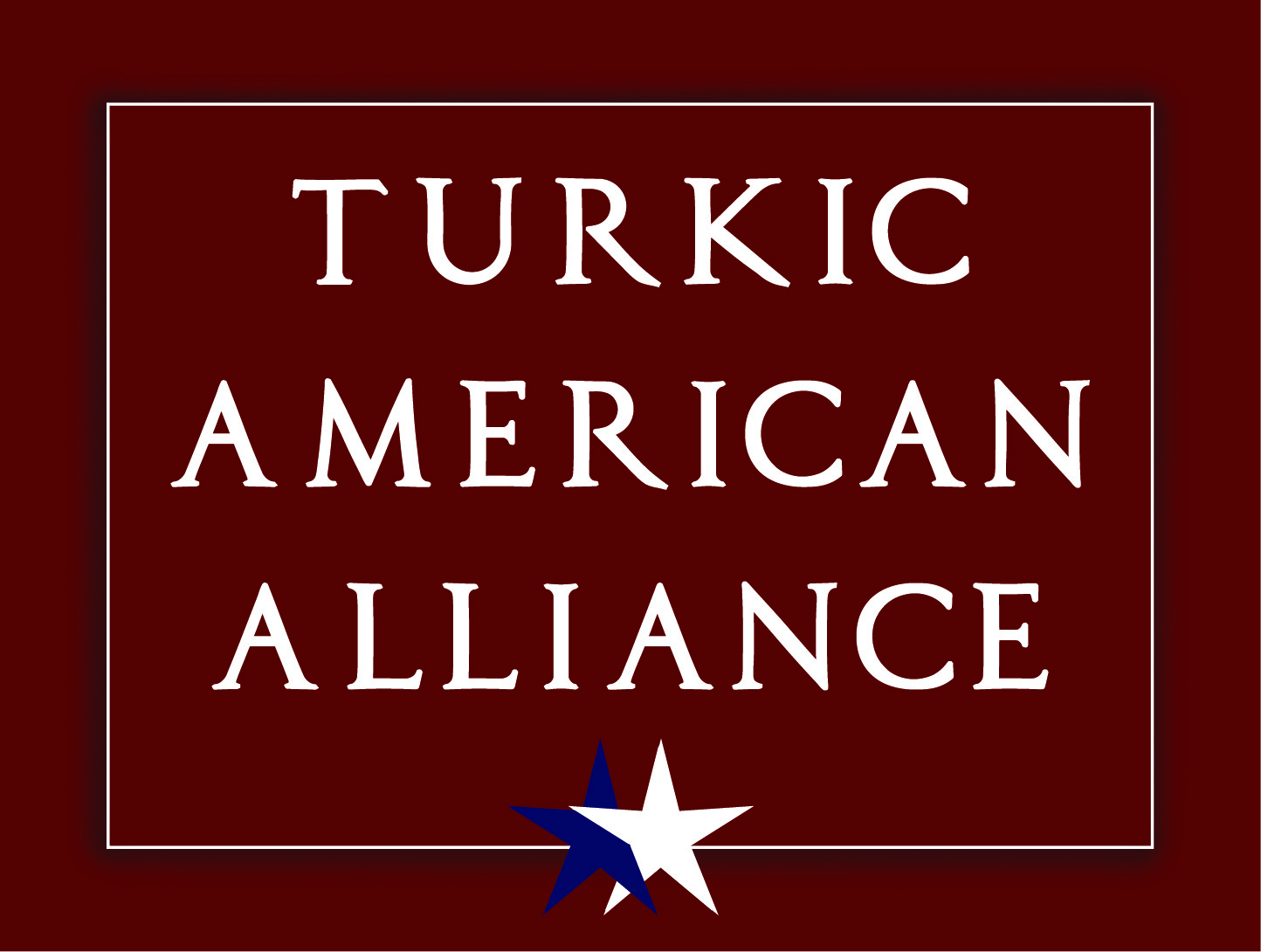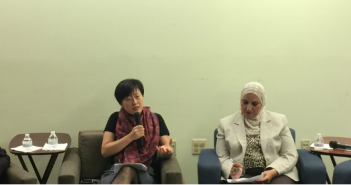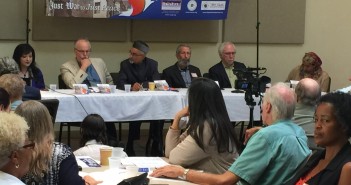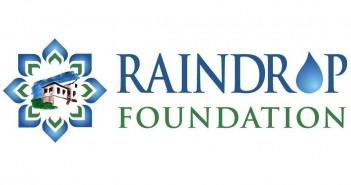The gates of Anatolia are once again going to open to the United States through the Anatolian Cultures and Food Festival, the world’s largest Turkish festival, to introduce Americans to Turkey and Anatolian civilizations and to promote Turkey’s diverse cultural communities. The four-day event, which will start on May 6, is going to be held at the Orange County Fairgrounds in Southern California. The festival was first heldlast year between April 2 and 5 with the participation of almost 30,000 people from the US and around the world.
Preparation has already begun for the 2010 Anatolian Cultures and Food Festival, and more than 200 people, including Turks, Armenians, Jews and Americans, have volunteered to help out at the festival. Last year’s festival showcased 11 archways, a replica of the Trojan horse and photographs, hand-painted images and replicas of monuments from five major cities — Istanbul, Konya, Antalya, Mardin and Van. At each city station, artisans who traveled from Turkey demonstrated traditional crafts like weaving, stone-carving, filigree and paper marbling.
The Pacifica Institute, a nonprofit organization founded in 2003 by a group of Turkish-Americans based in California, is the main sponsor of the Anatolian Cultures and Food Festival and aims to introduce Californians to the history and cultures of Turkey (modern-day Anatolia). In addition, the California Turkish American Chamber of Commerce (CATA-Chamber), the Organization of Istanbul Armenians of Los Angeles (OIA), the Atlantic Association of Cultural Cooperation and Friendship (BAKIAD) and the Assembly of Turkish American Associations are other sponsors of the festival. This year’s festival will become richer than last year’s first festival in terms of both content and design, says Atilla Kahveci, the vice president of the Pacifica Institute.
Sets for last year’s festival, which were constructed in Istanbul by a team of 50 carpenters, under the guidance of historians and archaeologists, will be at this year’s festival once again. These include replicas of landmarks such as Istanbul’s Kiz Kulesi (Maiden Tower) and the Bosporus Strait, Mardin’s panoramic view of stone houses, the Mevlana Museum, Antalya’s Aspendos Theater, the Grand Bazaar, Van’s Akdamar Church and the Haydarpasa train station. Next to each model, there will be information and photographs along with translations of related manuscripts, just like last year.
While the first festival hosted 100 shops and visitors helped themselves to drinks near a replica of the Ahmed III Fountain last year, visitors at this year’s festival will have the opportunity to visit nearly 120 shops and promotional stalls set up in the large arena where they can buy plenty of traditional Turkish goods. In the middle of the fairground, there will be many tables set up where visitors can sample various Turkish delicacies.
Kivilcim Kalaba, the art director and designer of the festival, said the Anatolian Cultures and Food Festival is ahead of other festivals because visitors are able to see giant pictures of Turkey. We have been working very much to prepare many visual materials for the festival. Some 20,000 photographs will be used to make 3-D sets of Topkapi Palace, which will be added to this year’s festival. We are trying to move Turkey, the various civilizations of Anatolia, to Orange County,†noted Kalaba.
Topkapi Palace in California to mesmerize locals
When asked what the festival’s primary message is, Kalaba said it was to introduce others to the civilizations in Turkey, which has become a rich country thanks to these civilizations. Anatolia is a strategic peninsula between Asia and Europe that was home to many important civilizations. Built and designed after careful consultation with art history professors, the Path of Anatolia’s in the festival will bring visitors down a path that boasts archways with information about the Hittite, Trojan, Urartu, Phrygian, Lydian, Ionian, Roman, Byzantine, Seljuk and Ottoman cultures. At each doorway, there will be two people dressed in those cultures costumes to greet visitors like last year. All of these make the festival magnificent, added Kalaba, underlining that Turkey’s five cities made by using 3-D sets will be increased in upcoming years to be shown off at the festival.
Replicas of Istanbul’s Topkapi Palace and the Bosporus, Antalya’s Aspendos Theater, Konya’s Mevlana Museum, Van’s Akdamar Church and Mardin’s stone dwellings have constructed for the festival. Many vendors will offer authentic foods, crafts and other wares at an area styled after the Grand Bazaar in Istanbul. A number of artisans will demonstrate traditional crafts such as weaving, miniature painting, calligraphy and carving. A section of the fair will be set aside for children’s activities and will include a children’s theater, where shows will be put on featuring characters such as Nasreddin Hodja, Keloglan and, of course, the shadow puppets Karagoz and Hacivat. The festival will also include a VIP lounge and a press center.
There will be folk dances and concerts in which songs by Turkish, Greek, Armenian and Assyrian musicians will be performed. In addition to Americans and foreigners, many Turkish people living in America will get a chance to imagine they have returned to their hometowns even though it is only a festival.
Ibrahim Barlas, the president of Pacifica Institute, known formerly as Global Cultural Connections, said last year’s festival, which was built on an area of 30,000 square meters, hosted nearly 30,000 visitors. As this year’s second festival is expected to host more than 30,000 visitors, the festival area will be increased to 52 square meters. We believe that Topkapi Palace alongside the silhouette of five cities [Mardin, Van, Istanbul, Antalya, Konya] will greatly attract the visitors’ attention this year, noted Barlas.
Barlas added that the Path of Anatolia, which consisted of 11 arches, each depicting a different civilization ranging from the Hittites and Byzantines to the Romans and Ottomans last year, will be increased to 14 arches this year in which many visitors will be able to learn about civilizations that date back up to 5,000 years.
The Pacifica Institute works in Southern California in support of the Gulen movement, inspired by well-respected Turkish intellectual and scholar Fethullah Gulen. The institute sponsors conferences, panel discussions, public forums and art performances in an effort to bring people together. Even though it is particularly supportive of enhancing interfaith dialogue, its main goal is to serve various communities, strengthen civil society and promote the development of human values. Kemal Cem, one of the coordinators of the festival, stated that the festival is pursuing a goal promoting tolerance and dialogue between all people. We want to show through the festival that foreigners as well as Turkish people are also a fundamental component of civilizations in Anatolia. Furthermore, we believe that American, Armenian, Jewish, Assyrian and other people will find something belonging to their culture in the festival. OIA is already one of the sponsors of our festival, noted Cem.
New displays for the festival have been made by Norm Design in Istanbul. Barlas noted that the festival’s new displays were brought to California in four big container trucks. A group of 20 people from Turkey will set up the festival area in California, said Cemal Koymaz, the owner of Norm Design. The festival, which received extensive coverage from local media last year, is currently under construction.
Source:Elif Akdeniz, Istanbul, Today’s Zaman, Retrieved on April 26, 2010 from http://www.todayszaman.com/news-208418-101-gates-of-anatolia-opening-to-america-once-again-with-turkish-festival.html




